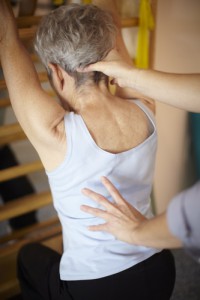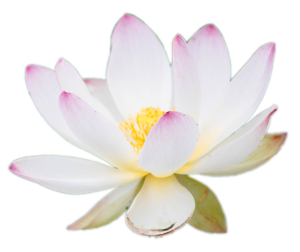The human spine is made up of 33 stacked vertebrae. These segments allow small movements in all directions which facilitates balance in the upright position. A normal human spine is not straight. There are small curves at the neck, upper back and low back. If these curves become exaggerated, posture, mobility and stability of the spine and trunk are affected.
There are 3 primary ways in which excessive spinal curvature develops: lordosis, kyphosis and scoliosis.
Lordosis is excessive inward arching of the spine. This usually, but not always, begins in the low back. Seen from the side, a sway back illustrates this condition. Lordosis is almost always accompanied by a forwardly tipped pelvis, loss of abdominal muscle strength and a backwardly tipped or elevated rib cage. The muscles of the low back become short, tight and compress the spine. This core imbalance disrupts the position and function of the shoulders and arms, the hips and legs, and the neck and head. It also interferes with normal, restful breathing. If left uncorrected, musculoskeletal imbalances generated by this posture can contribute to pain and injury, and can contribute to the development of kyphosis and scoliosis.
 Kyphosis is excessive rounding of the spine, most commonly occurring in the upper back. Often, excessive lordosis is present in the low back. Seen from the side, the upper torso appears bent forward. In order to maintain an upright head, the neck angles forward and the chin tilts up. The shoulders move into a forward rounded position. Breathing capacity tends to be reduced requiring overuse of the muscles of the neck to assist respiration. Over time the vertebrae can change shape and become wedged making it more difficult to reverse this pattern.
Kyphosis is excessive rounding of the spine, most commonly occurring in the upper back. Often, excessive lordosis is present in the low back. Seen from the side, the upper torso appears bent forward. In order to maintain an upright head, the neck angles forward and the chin tilts up. The shoulders move into a forward rounded position. Breathing capacity tends to be reduced requiring overuse of the muscles of the neck to assist respiration. Over time the vertebrae can change shape and become wedged making it more difficult to reverse this pattern.
 Scoliosis develops when, for unknown reasons, the vertebrae begin to side bend and rotate. Seen from the back, an X-ray will reveal a “C” curve or an “S” shape of the spine. This may be visible as uneven prominences of the back, uneven height of the hips or as an elevated right shoulder.
Scoliosis develops when, for unknown reasons, the vertebrae begin to side bend and rotate. Seen from the back, an X-ray will reveal a “C” curve or an “S” shape of the spine. This may be visible as uneven prominences of the back, uneven height of the hips or as an elevated right shoulder.
Although scoliosis can occur at any age, it develops most commonly during periods of rapid growth in childhood or adolescence, following trauma or with aging. Side curvatures are often accompanied by excessive lordosis of the low or mid back and sometimes by kyphosis of the upper or low back. Scoliosis causes loss of height, loss of muscle balance right to left, decreased respiratory efficiency, and pain can result.
Lordosis, kyphosis and scoliosis are spinal deformities, however these conditions cause compensations in multiple physiological systems. If untreated, these compensations begin to reinforce the spinal changes. Fortunately, rehabilitation methods to re-balance the body have been developed. It is most efficient to begin retraining early in the process before structural changes in the bones and soft tissue take place, but re-balancing activities can help at any stage.
Postural Restoration Methodology and the Schroth Method offer 3 dimensional activities which work asymmetrically to re-activate short tight muscles and to relax and shorten over lengthened ones. This muscle activity influences the vertebrae and rib cage. Both methods also rely on retraining breathing to assist in this re-balancing. Once learned, these techniques are applied to activities of daily living, and to sports activities when appropriate, breaking old postural habits and reinforcing new postures and movement patterns.




